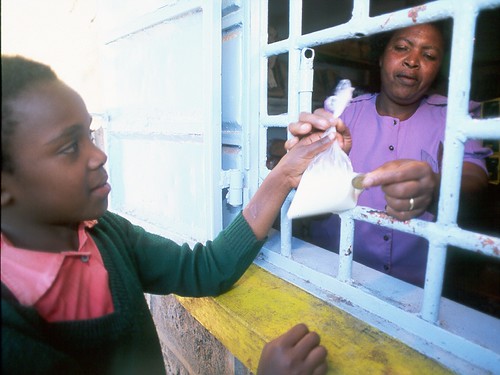 |
| Milk sale in Nairobi's informal market (photo credit: ILRI/Brad Collis). |
The March 2013 issue of the New Agriculturist online newsletter highlights some of the approaches used by the East Africa Dairy Development (EADD) project to transform attitudes to gender so as to achieve increased participation of women in livestock development activities.
The EADD project aims at doubling household income from dairy products among 179,000 livestock-keeping households in Kenya, Uganda and Rwanda.
The project has adopted a dairy hub approach to enable farmers' have easy access to key farm inputs and animal health services as well as bulking and chilling facilities for their milk.
A baseline survey carried out in 2008 found that only 14% of dairy organization members were women. Because gender equity was a key pillar of the project, a pragmatic gender strategy was developed to incorporate gender issues into the project towards increasing women's participation.
Various gender transformative approaches were used. These included training of project staff at country and regional level, incorporation of key gender indicators in project planning and budgets for monitoring and evaluation, and training of farmer groups, particularly women, on the importance of being a member of a dairy organization.
These efforts have borne fruit, with a noted increase in women's membership in dairy organizations from 14% at the start of the project to 29% in June 2012.
The EADD project is now entering its second phase, which will see the project activities expand into Ethiopia and Tanzania.
Read the complete article: Tackling gender blindness in East African dairy development
